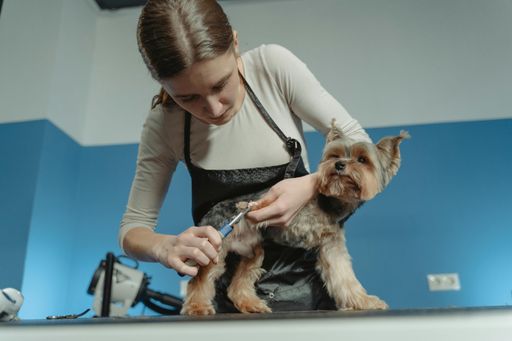Every kid needs a dog. If you’re a pet parent, you’re probably already on board with this statement. After all, pets are a crash course in unconditional love. When you bring one into the family, you experience the special magic animals have to transform a house into a home.
But when a child is being adopted, when a little one is faced with making the transition into a new family, an animal is likely far more than an entertaining companion or soft cuddle buddy. For an adopted child, a companion animal can be comfort, support. For an adopted child, a therapy pet can provide both hope and home.
This article examines the unique benefits of companion animals for children undergoing adoption.
Constant Comfort
Anyone who has ever loved an animal knows that there are few things more comforting than that warm little body curled on your lap. There may be nothing more soothing than a wet nose nuzzling your neck or the drone of a purring cat under your hand. And when children have experienced trauma, this kind of constant comfort can make every difference in the world.
Unfortunately, for many adopted children, trauma is not just a risk, but a reality. Whatever may have occurred to separate the child from their birth family, there is almost inevitably a difficult history behind it. Even in the best of circumstances, where the relationship between the child and their new family is already strong, adjusting to a new household can be a challenge and can be traumatic in itself.
A companion animal can be the child’s calm in the midst of the storm. In fact, the bond between an adopted child and a rescue animal is unlike most any other, due to what psychologist Deanne Linville calls “parallel experience.” Allowing your child to adopt a pet as a part of their transition process can help provide them with that sense of companionship, comfort, and understanding that adopted children, especially traumatized children, so desperately need.
The child gets to rescue their pet, just as they have been “rescued.” The child and their sidekick understand what it is to build a new life in a new home with a new family. Both know how it feels to be rescued, the good and the bad.
ESAs and Service Animals
Children who come from particularly troubled backgrounds, such as those who were placed in the foster care system, may face especially difficult challenges as they try to integrate into their new home and family. A turbulent history may well give rise to significant psychological, emotional, physical, and behavioral issues, ranging from poor physical health to maladjustment, depression, anxiety, and even post-traumatic stress disorder (PTSD).
For children facing obstacles as difficult as these, rescuing an animal may not be sufficient. Children with emotional or mental health disorders may benefit most from a registered emotional support animal (ESA).
Registering an animal as an ESA often requires a doctor’s prescription or some other form of medical certification, but having this documentation in place can allow children to take their ESA into many places where they may otherwise not have been allowed, such as in schools or on planes. And ESAs are particularly adept, whether due to natural temperament or to behavioral training, to help calm and comfort their humans when stress, anxiety, fear, and sadness loom.
A service animal, likewise, can be an immense source of help and support for children with disabilities. However, service animals, unlike ESAs, must undergo significant training to provide specialized assistance for their human, particularly those whose disabilities include physical impairments.
Service animals tend to be more difficult to procure, and registration processes tend to be more complex than for ESAs. They also tend to be quite a bit more costly, which can be difficult for families dealing with the often very high costs of adoption.
But for kids with significant physical, emotional, or mental health challenges, a registered service animal can literally be a lifesaver. That’s because a service animal, depending on its training, can even alert their human to high blood glucose levels or an impending seizure. Even more, for an adopted and potentially traumatized child, a service animal can dramatically increase the overall quality of life, giving them confidence, support, comfort, and independence in situations that might once have been triggering, such as schools, doctors’ offices, and other public places.
Those who have experienced the life-changing love of an animal are fortunate, indeed. But perhaps the most fortunate of all are those who get to not only love an animal but need one. Animals have an uncanny ability to know who needs them and how. For adopted children, this need can be particularly great, but greater still are the extraordinary comfort, companionship, and calm a pet can provide them.



















